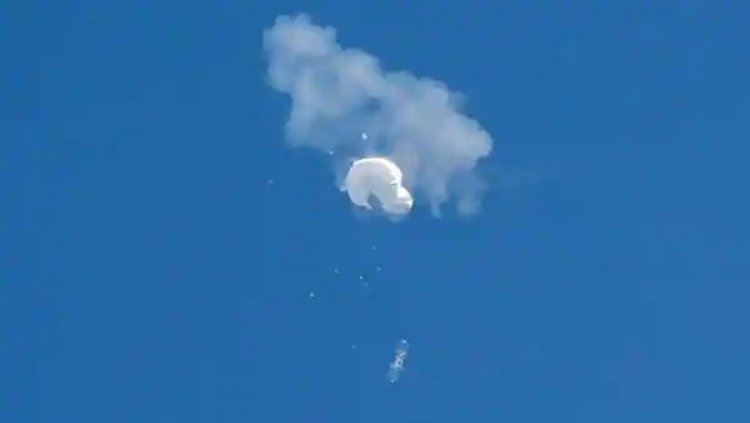India - China: Spy Balloons’ Worry for India
STORIES, ANALYSES, EXPERT VIEWS

Deputy Secretary of State Wendy Sherman briefed briefed ‘nearly 150 foreign diplomats across 40 embassies’ in the US and Beijing, explaining its action of shooting down the balloon, presenting reasons why it was not a ‘civilian’ weather balloon, as China claimed, but an intelligence-gathering device.
The Washington Post reported Tuesday “The surveillance balloon effort, which has operated for several years partly out of Hainan province off China’s south coast, has collected information on military assets in countries and areas of emerging strategic interest to China including Japan, India, Vietnam, Taiwan and the Philippines.”
The Post‘s report was based on interviews with several anonymous defence and intelligence officials.
Officials have said these surveillance airships, operated in part by the PLA (People’s Liberation Army) air force, have been spotted over five continents, the daily reported. “These balloons are all part of a PRC ( People’s Republic of China) fleet of balloons developed to conduct surveillance operations, which also violated the sovereignty of other countries,” a senior defence official was quoted as saying.
The US media alleged that the spy balloon project has been operating for several years, and ‘has collected information on military assets in countries and areas of emerging strategic interest to China including Japan, India, Vietnam, Taiwan and the Philippines’.
It seems counterintuitive, writes The Tribune “to use an apparently low-tech method such as a balloon for intelligence-gathering when high-resolution satellite images of the earth’s surface are easily available…..But what is really remarkable about the Chinese balloon is that if it were indeed spying, it was doing so in a very brazen manner; and if it indeed was a ‘civilian airship’ intended for ‘meteorological research’, China’s secretiveness about it is quite inexplicable.”
Takeaway for India
One takeaway for India from this episode, writes The Tribune “is that it must keep its eyes open — it’s not quite a new lesson but the reinforcement of one, because China’s increased aggressiveness at the borders during the last few years has already underlined the need for India to always keep its guard up. For the countries that are concerned over China’s hegemonistic ambitions, it is imperative to share technology and intelligence in order to not be outsmarted and outmanoeuvred in geopolitical games.”
Reflection on China’s poor decision-making
R Rajagopalan (professor of International Politics at Jawaharlal Nehru University (JNU), New Delhi) speculates on why would China “engage in such risky behaviour. Was the Chinese leadership unaware of the risks involved? Either way, this does not bode well for China’s relations with others. For example, would they launch a war because the leadership is either oblivious of the risks or accepting because they are optimistic about their ability to handle it? This indicates deep flaws in their decision-making and that alternate, cautious viewpoints are not welcomed in the top echelons of the Chinese decision-making…
“Or is it possible that lower-level commands are sufficiently autonomous that they can order such missions that badly impact China’s relations with others, without referring to higher authorities? This suggests a different form of broken decision-making. There has been some speculation that this was what happened in the Galwan attack. If true, this also suggests the likelihood of further Chinese decisions and actions.
“Whatever the reasons for such poor strategic decisions, the balloon episode suggests that China has yet to recognise the problem, let alone rectify it. This does not bode well for anyone, especially China’s neighbours—India included.”
















